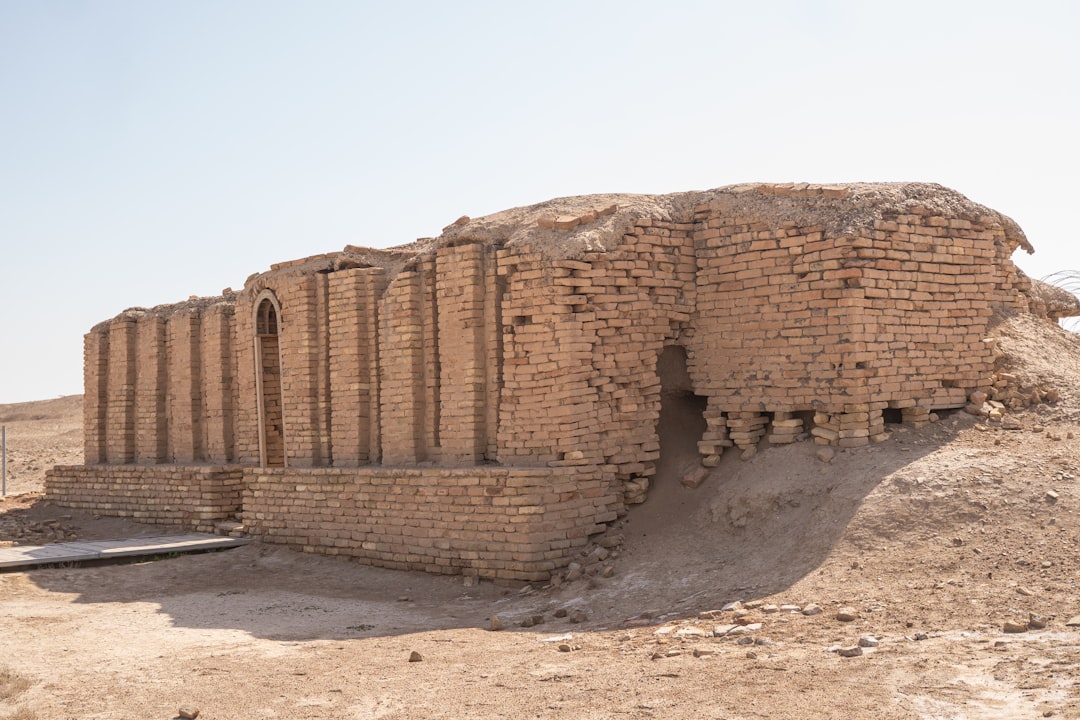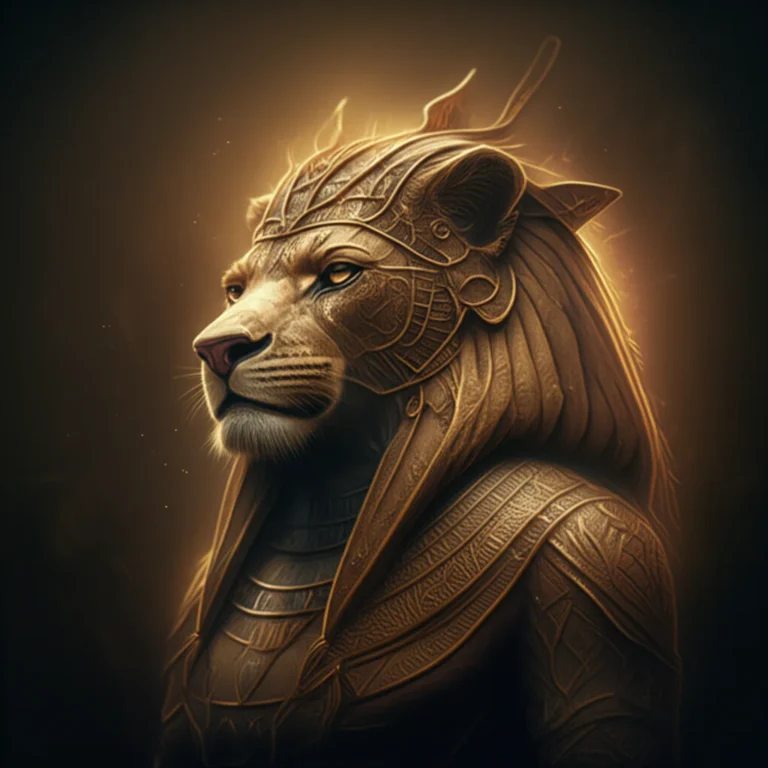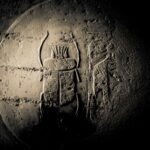Support our educational content for free when you purchase through links on our site. Learn more
The Anunnaki & Ancient Astronauts: 7 Shocking Truths (2025) 👽
We once spent a sleepless night in the British Museum’s Mesopotamian gallery, flashlight in hand, staring at a tiny lapis-lazuli tablet that supposedly lists “kings who ruled for 28,800 years.” Our guide whispered, “That’s the Anunnaki timeline—before the flood.” We left with goose-bumps and a question that still keeps us up: Were those kings gods, aliens, or just really bad at math?
In this 2025 deep-dive, we’ll crack open the cuneiform, tour the pyramids with a skeptical eye, and reveal why a single mistranslated Sumerian word may have launched a billion-dollar “ancient astronaut” industry. Stick around—by the end you’ll know exactly why the History Channel keeps green-lighting more seasons, and why mainstream archaeologists keep face-palming.
Key Takeaways
- The Anunnaki were Mesopotamian gods, not extraterrestrial miners—despite what late-night TV claims.
- Ancient astronaut theory is pseudoarchaeology built on mistranslations and “argument from personal incredulity.”
- Sitchin’s Nibiru/ gold-slave narrative has zero support from cuneiform scholars.
- Pyramids, Baalbek, Puma Punku were built by ingenious humans—no anti-grav tech required.
- Pop-culture spin-offs (books, shows, games) keep the myth alive because it sells—and you can too if you want the merch.
👉 CHECK PRICE on:
- Zecharia Sitchin’s The 12th Planet: Amazon | Walmart
- Erich von Däniken’s Chariots of the Gods: Amazon | Walmart
Table of Contents
- ⚡️ Quick Tips and Facts: Your Anunnaki & Ancient Astronaut Cheat Sheet
- 📜 Unearthing the Anunnaki: A Journey Through Ancient Mesopotamian Lore
- 🚀 The Ancient Astronaut Theory: A Cosmic Connection to Humanity’s Past?
- 👽 Are the Anunnaki the Ancient Astronauts? Connecting the Dots (or Not!)
- 🔍 Examining the “Evidence”: Archaeological Wonders & Alleged Anomalies
- 🧐 The Historian’s Lens: Separating Myth from Misinterpretation
- 📺 From Ancient Aliens to Pop Culture Phenomenon: The Anunnaki’s Modern Legacy
- 🤔 Our Expert Take: Navigating the Fascinating World of Ancient Mysteries
- ✅ Conclusion: The Enduring Allure of the Anunnaki and Ancient Astronauts
- 🔗 Recommended Links: Dive Deeper with History Hidden™
- ❓ FAQ: Your Burning Questions Answered
- 📚 Reference Links: Our Sources for Your Exploration
Alright, fellow history detectives, buckle up! Here at History Hidden™, we’ve spent countless hours in dusty archives, squinting at ancient tablets, and, yes, binge-watching our fair share of late-night documentaries. Today, we’re tackling one of the biggest, most mind-bending questions in alternative history: Were the Anunnaki of ancient Sumer actually extraterrestrial visitors? 👽
We’re going to dive deep, separating the archaeological facts from the cosmic fantasies. We’ll look at the ancient texts, the “evidence” on the ground, and the modern theories that have captured the world’s imagination. So, grab your tinfoil hat (or your historian’s fedora, your choice!) and let’s get to it.
⚡️ Quick Tips and Facts: Your Anunnaki & Ancient Astronaut Cheat Sheet
Pressed for time? Here’s the low-down on the Anunnaki and ancient astronaut theory in a nutshell.
- Who were the Anunnaki? In actual Sumerian mythology, the Anunnaki were a group of deities, the children of the sky god An and the earth goddess Ki. They were powerful, celestial beings who were said to decree the fates of humanity.
- What is the Ancient Astronaut Theory? This is a modern hypothesis suggesting that extraterrestrial beings visited Earth in antiquity and influenced human civilization, technology, and religion.
- The Big Connection: Author Zecharia Sitchin famously proposed that the Anunnaki were not gods, but rather flesh-and-blood astronauts from a 12th planet called Nibiru.
- The “Evidence”: Proponents point to things like ancient megalithic structures (pyramids, Puma Punku), puzzling artifacts, and interpretations of religious texts as proof of alien intervention.
- Mainstream View: ✅ The vast majority of scientists, historians, and archaeologists consider the ancient astronaut theory to be pseudoarchaeology. They argue that the evidence is based on misinterpretations and a lack of understanding of ancient cultures.
- The Core Claim: Sitchin’s theory posits the Anunnaki came to Earth to mine gold and genetically engineered Homo sapiens as a slave race to do the work for them.
- Pop Culture Impact: The theory was popularized by Erich von Däniken’s 1968 book Chariots of the Gods and has become a cultural phenomenon, most notably through the History Channel series Ancient Aliens.
📜 Unearthing the Anunnaki: A Journey Through Ancient Mesopotamian Lore
Before we blast off into outer space, let’s ground ourselves in the sands of ancient Mesopotamia. To understand the modern theories, you first have to understand the original stories. What did the Sumerians actually say about the Anunnaki?
Who Were the Anunnaki in Sumerian Mythology? Gods, Deities, or Something More?
Forget what you’ve seen on TV for a moment. In the earliest Sumerian texts, dating back over 4,000 years, the Anunnaki (or Anuna) were the top-tier deities in their pantheon. The name is often translated as “princely offspring” or “those of royal blood.”
- The Pantheon’s Elite: They were the descendants of An (the god of the heavens) and were considered the most powerful gods. This group included major figures like Enlil (god of air and storms) and Enki (god of water, knowledge, and creation).
- Judges of Fate: Their primary role was to act as a divine council, decreeing the fates for both gods and mortals. In later Babylonian myths, like the Epic of Gilgamesh, they became judges of the Underworld.
- Celestial, Not Extraterrestrial: The Sumerians saw their gods as powerful, anthropomorphic beings who lived in the heavens, but there’s no textual evidence they considered them visitors from another planet. They were divine beings, part of the cosmic order, not biological aliens. As Wikipedia’s entry on the Anunnaki notes, “In the earliest Sumerian writings… the Anunnaki are the most powerful deities in the pantheon… descended from An, the god of the heavens.”
These fascinating tales are a cornerstone of human storytelling, a topic we explore further in our Mythology Stories category.
Decoding Cuneiform: The Epic of Gilgamesh, Enuma Elish, and Other Ancient Texts
Our understanding of the Anunnaki comes from incredible cuneiform texts painstakingly translated by scholars.
| Ancient Text | What It Says About the Anunnaki | Our Historian’s Take |
|---|---|---|
| Enuma Elish (The Babylonian Creation Epic) | Marduk, the chief god of Babylon, assigns the Anunnaki to their stations in the heavens and the underworld. 600 Anunnaki are mentioned, 300 in heaven and 300 on earth. | This text is about establishing Marduk’s supremacy in the pantheon. The Anunnaki are powerful, but they are part of a divine hierarchy, not a space crew. |
| The Epic of Gilgamesh | The Anunnaki are depicted as seven terrifying judges of the Underworld who set the land aflame during the Great Flood. | Here, their role has shifted to chthonic (underworld) deities. This evolution of myth is common across cultures and doesn’t suggest a change in their “origin.” |
| Atra-Hasis | The Anunnaki are the “senior” gods who make the junior gods, the Igigi, do all the hard labor. The Igigi eventually rebel, leading to the creation of humans to take over the work. | This is the story that ancient astronaut theorists latch onto! They see “hard labor” as mining and the “creation of humans” as genetic engineering. However, in context, it’s a classic mythological trope explaining humanity’s purpose: to serve the gods and relieve them of toil. |
🚀 The Ancient Astronaut Theory: A Cosmic Connection to Humanity’s Past?
Okay, now let’s put on our theorist hats. Where did the idea of aliens building the pyramids come from? This isn’t an ancient belief; it’s a thoroughly modern one, a fascinating piece of contemporary Folklore and Legends.
The Genesis of a Grand Idea: From Von Däniken to Sitchin
While whispers of ancient alien contact existed before, the theory exploded into popular consciousness with two key figures.
- Erich von Däniken: This Swiss author’s 1968 blockbuster, Chariots of the Gods?, became a global phenomenon. Von Däniken posed a simple, provocative question: What if the “gods” described in ancient texts were actually misunderstood extraterrestrials? He famously said, “I maintain that our ancestors received visits from outer space in the remote past…” He pointed to the Nazca Lines in Peru, the Egyptian pyramids, and biblical descriptions like Ezekiel’s fiery chariot as evidence of advanced technology.
- Zecharia Sitchin: Sitchin took it a step further. He wasn’t just asking questions; he claimed to have the answers, based on his unique (and widely disputed) translations of Sumerian cuneiform. His 1976 book, The 12th Planet, specifically identified the Anunnaki as the ancient astronauts.
Key Tenets of the Ancient Astronaut Hypothesis: What Do Proponents Claim?
The theory, in its various forms, rests on a few core ideas:
- ❌ Ancient texts are historical records of alien contact. Proponents read myths and religious stories not as allegory or metaphor, but as literal, eyewitness accounts of technological events.
- ❌ “Impossible” artifacts and structures. The argument goes that ancient people couldn’t possibly have built things like the Giza pyramids or cut the stones at Puma Punku without advanced, non-human help.
- ❌ Paleo-contact evidence. This refers to supposed depictions of aliens, spaceships, and advanced tech in ancient art, like the Val Camonica petroglyphs in Italy or the “helicopter” hieroglyphs at Abydos.
- ❌ Biological intervention. The most extreme version of the theory claims that aliens manipulated the DNA of early hominids to create Homo sapiens—the “missing link” is an alien one.
👽 Are the Anunnaki the Ancient Astronauts? Connecting the Dots (or Not!)
This is the million-dollar question, isn’t it? The direct line connecting the Anunnaki to ancient astronauts was drawn almost single-handedly by Zecharia Sitchin. His narrative is incredibly detailed and compelling, which is why it has had such staying power.
Zecharia Sitchin’s Earth Chronicles: Nibiru, the Nephilim, and Human Origins
Here’s a breakdown of Sitchin’s grand, cosmic story:
- The Planet Nibiru: Sitchin claimed there is a 12th planet in our solar system (counting the Sun and Moon) called Nibiru. It has a long, elliptical 3,600-year orbit.
- The Gold Mission: The atmosphere of Nibiru was failing, and its inhabitants—the Anunnaki—needed gold to create a protective shield. They discovered Earth was rich in gold and launched a mission here around 450,000 years ago.
- The Creation of Man: The Anunnaki who were tasked with mining the gold in southern Africa eventually mutinied (sound familiar? Think Atra-Hasis). To solve the labor shortage, two lead scientists, Enki and Ninhursag, used in-vitro fertilization and genetic engineering. They mixed their Anunnaki DNA with the DNA of a native hominid (Homo erectus) to create a hybrid worker species: us, Homo sapiens.
- Biblical Parallels: Sitchin connected the Anunnaki to the Nephilim mentioned in the Bible’s Genesis 6:4, the “sons of God” who interbred with the “daughters of men.”
It’s an epic tale! It has drama, science fiction, and it purports to solve some of humanity’s greatest mysteries. But is it history? We’ll get to the historian’s take in a bit.
Want to read the source of the theory for yourself?
- Zecharia Sitchin’s The 12th Planet (The Earth Chronicles, Book 1): Amazon | Walmart
- Erich von Däniken’s Chariots of the Gods: Amazon | Walmart
The “Missing Link” Argument: Did Extraterrestrials Engineer Humanity?
One of the most seductive parts of this theory is its explanation for the “sudden” appearance of Homo sapiens and the supposed gaps in the fossil record. Proponents like Clara Bush point to the FOXP2 gene, which is related to complex language, noting the small but significant difference between the human and chimpanzee versions. Was this a natural mutation, or was it an alien software update?
While it’s a fun thought experiment, the scientific consensus is clear: human evolution is a well-documented process of natural selection over millions of years. The “gaps” in the fossil record are continually being filled by new discoveries, and geneticists can trace our lineage back without any need for an extraterrestrial variable.
🔍 Examining the “Evidence”: Archaeological Wonders & Alleged Anomalies
So, what about the physical “proof”? Proponents claim it’s all around us, from massive structures that seem to defy ancient construction methods, like the incredible feats seen in Mohenjo-daro’s advanced technology, to tiny details in ancient carvings. Let’s put on our archaeology hats and examine some of the greatest hits.
The Sumerian King List: Long Reigns and Divine Descent
This ancient text lists the rulers of Sumer and their reign lengths. The problem? The earliest, “antediluvian” (pre-flood) kings are listed as reigning for tens of thousands of years. For example, Alulim is said to have ruled for 28,800 years!
- Theorist’s View: These aren’t years; they’re orbital periods of Nibiru, or the lifespans of the Anunnaki were simply that long. It’s literal proof of non-human rulers.
- Historian’s View: This is a classic example of mythological storytelling. Exaggerated reign lengths were used to legitimize a dynasty by giving it a divine, ancient, and unbroken lineage stretching back to the dawn of time. The numbers are symbolic, not literal.
Megalithic Marvels: Baalbek, Puma Punku, and the Pyramids of Giza
How did ancient people lift the 1,200-ton “Stone of the Pregnant Woman” at Baalbek, Lebanon? How did they achieve the laser-like precision cuts in the andesite stone at Puma Punku, Bolivia?
- Theorist’s View: They couldn’t have. Not without levitation devices, laser cutters, or other alien technology. As the Wikipedia summary states, theorists believe “the Annunaki built the pyramids and all the other monumental structures… so impossible to build without highly advanced technologies.”
- Historian’s & Archaeologist’s View: This argument relies on what we call the “argument from personal incredulity.” Just because we can’t immediately figure out how they did it with simple tools doesn’t mean they couldn’t. Experimental archaeology has shown that with enough manpower, ingenuity, time, and simple machines (levers, rollers, ramps, sleds), these feats were entirely possible. It’s a testament to human brilliance, not alien intervention.
Ancient Art & Artifacts: The “Bag” Figures, “Wristwatches,” and Other Puzzling Depictions
You’ve seen the pictures online: Sumerian deities carrying what looks exactly like a modern handbag, or Assyrian reliefs where gods seem to be wearing wristwatches.
- Theorist’s View: These are depictions of alien technology! The “bag” is a power source or a specimen kit. The “wristwatch” is a communication device.
- Historian’s View: This is all about context. The “handbag” is consistently identified by Assyriologists as a bucket (a banduddu), likely holding holy water for purification rituals, often paired with a pine cone (mullilu) for sprinkling. The “wristwatch” is simply part of an ornate decorative bracelet, common for royalty and deities in Mesopotamian art.
Biblical Connections: The Nephilim, Ezekiel’s Wheel, and Other Interpretations
The Bible is another key source for theorists.
- The Nephilim: Genesis 6:4 says, “There were giants in the earth in those days…” Theorists equate these giants with the Anunnaki.
- Ezekiel’s Vision: The prophet Ezekiel describes a flying object with wheels within wheels, fire, and living creatures. Theorists see this as a clear description of a UFO.
- Historian’s & Theologian’s View: The Nephilim are a subject of intense theological debate, but are generally understood within their context as part of a myth explaining the wickedness of humanity before the flood. Ezekiel’s vision is a powerful piece of apocalyptic literature, rich with complex symbolism about the glory and omnipresence of God, not a technical schematic of a spacecraft.
🧐 The Historian’s Lens: Separating Myth from Misinterpretation
As your dedicated team at History Hidden™, this is where we have to put our foot down. While the ancient astronaut theory is undeniably entertaining, it falls apart under academic scrutiny. It’s built on a foundation of what is formally known as “pseudoarchaeology.”
Linguistic Lapses: The Pitfalls of Translation and Context
The entire Sitchin hypothesis rests on his translations of Sumerian cuneiform. The problem? No other cuneiform scholar agrees with him.
- Example: Sitchin translates the Sumerian word “mu” as “rocket ship.” Mainstream scholars agree it means “name,” “lineage,” or “year.”
- Example: He claims the Enuma Elish is a description of planetary formation and the collision that created Earth. Scholars read it as a political and religious text celebrating the rise of the god Marduk.
Sitchin took words out of their mythological and cultural context and assigned them modern, technological meanings. It’s like finding a 500-year-old text describing a “fiery steed” and insisting it’s a Ferrari, not a horse.
Archaeological Consensus vs. Alternative Narratives: What Do the Experts Say?
When it comes to the “impossible” structures, the archaeological community is largely united.
- ✅ We know how the pyramids were built. We have found the workers’ villages, their bakeries, their tombs. We have found papyri, like the Diary of Merer, that detail the logistics of transporting stone for the Great Pyramid.
- ✅ Ancient ingenuity is consistently underestimated. The idea that ancient people were too “primitive” to achieve great things is not only wrong, it’s insulting to their legacy. They had generations of accumulated knowledge, sophisticated mathematics, and a deep understanding of engineering and materials.
The Problem with Confirmation Bias: Seeing What We Want to See
The ancient astronaut theory is a textbook case of confirmation bias. It starts with a conclusion—”aliens visited Earth”—and then selectively picks and reinterprets evidence to fit that conclusion, while ignoring all evidence to the contrary. A strange-looking carving must be a helmet. An unusual text must be about spaceships. This is the opposite of the scientific method, which starts with evidence and builds a conclusion from there.
📺 From Ancient Aliens to Pop Culture Phenomenon: The Anunnaki’s Modern Legacy
Whether you believe it or not, you can’t deny the theory’s massive cultural footprint. It has transcended niche books and become a full-blown media empire.
Books, Documentaries, and TV Shows: How the Narrative Has Evolved
The undisputed king of this domain is the History Channel’s Ancient Aliens. The show, which first aired in 2010, took the ideas of von Däniken and Sitchin and blasted them into the mainstream. With its dramatic reenactments, charismatic commentators (Hello, Giorgio A. Tsoukalos!), and “what if?” rhetorical questions, it has introduced the Anunnaki to millions.
The narrative has also been absorbed into video games (like the Assassin’s Creed series and its Isu civilization), movies (Prometheus), and countless other books and online communities, each adding its own spin to the mythos.
Influence on Spirituality, New Age Beliefs, and Conspiracy Theories
The Anunnaki story has become a foundational text for some New Age spiritual movements. It provides a creation story that sidesteps traditional religion while still offering a sense of cosmic connection and a “hidden truth.”
Unfortunately, it has also been co-opted by more extreme conspiracy theories. For example, theorist David Icke controversially merged the Anunnaki story with his own theory that the world is secretly run by shape-shifting reptilian aliens, a claim that has been widely criticized for its antisemitic undertones.
🤔 Our Expert Take: Navigating the Fascinating World of Ancient Mysteries
So, what’s the final verdict from the History Hidden™ team?
Here’s the deal: The story of the Anunnaki as ancient astronauts from Nibiru is compelling fiction, not historical fact. It’s a modern myth, a 20th-century reinterpretation of ancient stories through a science-fiction lens.
- Does that mean it’s not valuable? Absolutely not! The reason the theory is so popular is what’s truly fascinating. It speaks to a deep human desire to understand our origins, to feel connected to something vast and mysterious, and to believe that we are special. It encourages us to look at the past with fresh eyes and ask big questions.
- The Real Wonder: The danger is that in our search for aliens, we overlook the true marvel: the incredible achievements of our own ancestors. The Sumerians who invented writing, the Egyptians who built the pyramids, the Nazca people who etched giant figures into the desert—they don’t need aliens to be amazing. Their accomplishments are a testament to the power of human ingenuity, collaboration, and spirit.
Our advice? Enjoy the “what ifs.” Watch the shows, read the books, and let your imagination run wild. But always keep your critical thinking cap on. Use these fantastic stories as a gateway to learning about the real history of these incredible ancient cultures. The truth, we promise, is just as awe-inspiring.
✅ Conclusion: The Enduring Allure of the Anunnaki and Ancient Astronauts

What a journey, right? From the dusty tablets of ancient Mesopotamia to the dazzling theories of cosmic visitors, the story of the Anunnaki and ancient astronauts is a rollercoaster of myth, mystery, and modern imagination. Here at History Hidden™, we’ve sifted through the facts, the fictions, and the fascinating narratives that have captivated millions.
So, what’s the bottom line?
- The Anunnaki were originally powerful deities in Sumerian mythology, deeply embedded in the spiritual and cultural fabric of ancient Mesopotamia. They were not described as extraterrestrials but as divine beings governing fate and cosmic order.
- The ancient astronaut theory, popularized by authors like Erich von Däniken and Zecharia Sitchin, is a modern reinterpretation that projects contemporary ideas of technology and space travel onto ancient myths. While wildly entertaining, it lacks credible archaeological and linguistic support.
- The “evidence” cited by proponents—from megalithic architecture to ancient art—is better explained by human ingenuity, cultural symbolism, and mythological storytelling than by alien intervention.
- The connection to biblical Nephilim and other ancient gods is speculative and often based on selective readings of texts rather than comprehensive scholarship.
- Despite the lack of scientific backing, the theory’s pop culture impact is undeniable, inspiring books, TV shows, and spiritual movements.
Unresolved questions? We teased the idea of alien genetic engineering and mysterious ancient technologies. While these remain popular in speculative fiction and fringe theories, mainstream science continues to uncover natural explanations for human evolution and ancient engineering marvels.
Our recommendation? Dive into the stories with an open mind but a critical eye. The real history of the Anunnaki and ancient civilizations is rich, complex, and awe-inspiring on its own—no aliens required. And if you want to explore the theories further, do so armed with knowledge and curiosity.
🔗 Recommended Links: Dive Deeper with History Hidden™
Ready to explore the Anunnaki and ancient astronaut theories further? Here are some essential reads and resources to fuel your curiosity:
-
Zecharia Sitchin – The 12th Planet (The Earth Chronicles, Book 1):
Amazon | Walmart
Dive into the foundational text of the Anunnaki-as-ancient-astronaut theory. -
Erich von Däniken – Chariots of the Gods:
Amazon | Walmart
The classic that launched the modern ancient astronaut movement. -
Clara Bush – Were Ancient Astronauts the Anunnaki?
Read here
A thoughtful exploration of the connections and controversies surrounding the Anunnaki. -
History Hidden™ Article on Mohenjo-daro Advanced Technology:
Explore here
Discover real ancient innovations that continue to amaze historians and scientists alike.
❓ FAQ: Your Burning Questions Answered

Who are the Anunnaki and what is their role in ancient Sumerian mythology?
The Anunnaki are a group of deities in ancient Sumerian, Akkadian, and Babylonian mythology. They are described as the offspring of the sky god An (Anu) and the earth goddess Ki. Their primary role was to govern the cosmos, decree the fates of humans and gods, and act as judges in the underworld. They were revered as powerful divine beings, not as extraterrestrials. Their stories are deeply symbolic, reflecting the values and beliefs of Mesopotamian cultures.
What evidence supports the theory of ancient astronauts visiting Earth in the distant past?
Proponents of the ancient astronaut theory point to:
- Ancient structures like the pyramids, Baalbek, and Puma Punku, which they claim are too advanced for their time.
- Interpretations of ancient texts and artworks that allegedly depict spaceships, aliens, or advanced technology.
- Mythological stories describing gods descending from the sky.
- Genetic anomalies or gaps in human evolution.
However, mainstream archaeology and science find these claims unsubstantiated. The structures can be explained by human ingenuity, and ancient texts are better understood as mythological or religious literature. Genetic evidence supports natural evolution without extraterrestrial intervention.
Did the Anunnaki come to Earth to mine gold and other precious resources, and what were their motives?
This idea originates from Zecharia Sitchin’s interpretation of Sumerian texts, where he claims the Anunnaki came from the planet Nibiru to mine gold on Earth and genetically engineered humans as slave labor. There is no credible evidence in the original Sumerian texts supporting this narrative. The mining stories in Mesopotamian myths typically refer to divine activities or metaphorical concepts, not literal extraterrestrial gold mining operations.
How do the ancient Sumerian tablets describe the Anunnaki and their interactions with humans?
Sumerian tablets depict the Anunnaki as gods who created humans to serve them, often to relieve the lesser gods from labor. Humans were made in the image of the gods and were expected to worship and serve them. These interactions are framed in mythological terms, emphasizing divine authority and human obedience rather than historical or scientific accounts.
What are the similarities between the Anunnaki and other ancient gods from different cultures around the world?
Many ancient cultures have pantheons of gods who govern natural forces, human fate, and cosmic order. The Anunnaki share traits with other deities, such as:
- Anthropomorphic forms with supernatural powers.
- Roles as creators or judges.
- Associations with celestial bodies (sun, moon, stars).
These similarities reflect common human themes in mythology rather than evidence of shared extraterrestrial origins.
Can the pyramids and other ancient megalithic structures be attributed to the Anunnaki or other advanced civilizations?
While ancient astronaut proponents claim these structures were built with alien technology, archaeological evidence shows they were constructed by skilled human laborers using ingenious engineering techniques. Excavations have uncovered tools, worker villages, and logistical records demonstrating human capability. The idea that aliens built these monuments is not supported by credible evidence.
What is the connection between the Anunnaki and the biblical account of the Nephilim and fallen angels?
Some theorists link the Anunnaki to the Nephilim mentioned in Genesis 6:4, interpreting both as giants or hybrid beings resulting from divine-human interbreeding. However, biblical scholars generally view the Nephilim as mythological figures symbolizing moral decline before the flood. The Anunnaki and Nephilim come from different cultural and religious traditions, and any connection is speculative.
Are there any modern-day conspiracy theories or beliefs that suggest the Anunnaki are still influencing human affairs today?
Yes. Some conspiracy theories claim the Anunnaki are a secret ruling elite or that their descendants control global governments and economies. Figures like David Icke have incorporated the Anunnaki into broader narratives involving reptilian overlords and shadow governments. These ideas lack credible evidence and are widely dismissed by scholars but remain popular in certain fringe communities.
📚 Reference Links: Our Sources for Your Exploration
- Ancient Astronauts – Wikipedia
- Anunnaki – Wikipedia
- Epic of Gilgamesh – Britannica
- Diary of Merer – Livescience
- Were Ancient Astronauts the Anunnaki? – Clara Bush
- History Hidden™ – Mohenjo-daro Advanced Technology
- Zecharia Sitchin Official Website
- Erich von Däniken Official Website
Thanks for exploring this cosmic mystery with us! Keep questioning, keep learning, and remember—the past is never just what it seems. 🚀✨





You have apparently worked hard to disprove the cuneiform writings; however, you’ve shown you’re bias against believing in them at the very start; so, since you wrote this article one would assume you are a 100% professional translator of cuneiform writings; otherwise this article is just like bungholes; everybody has one… LOLOL